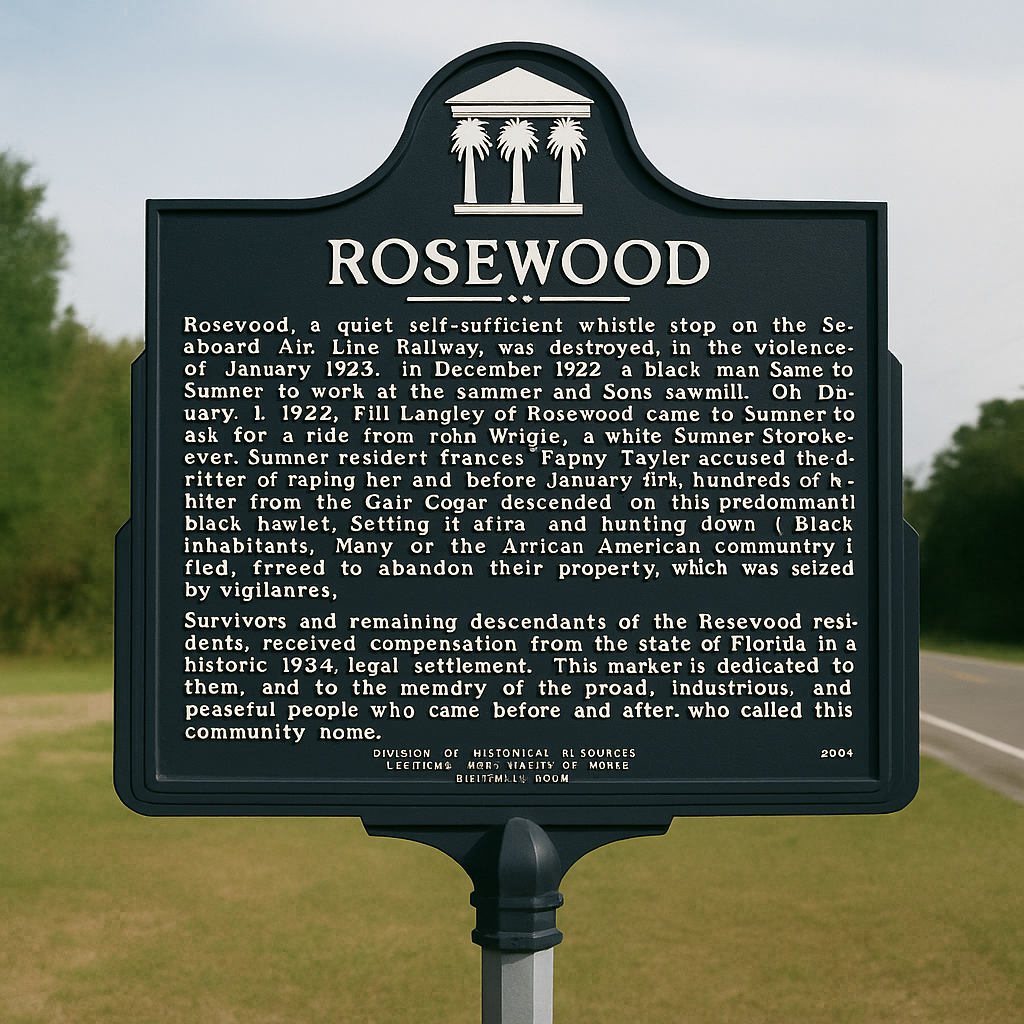Rosewood – In January 1923, the small, prosperous Black town of Rosewood, Florida, was burned to the ground. We have to acknowledge this as one of the worst racially motivated massacres in U.S. history. For decades, the story of Rosewood remained buried. That’s until survivors and journalists brought it back to light in the 1980s and 1990s.
What Happened in Rosewood?
The violence erupted on January 1, 1923. This occurred after a white woman in nearby Sumner falsely accused a Black man of assault. With no evidence, a white mob formed, targeting the neighboring town of Rosewood. It was the home to successful Black families, churches, schools, and businesses.
Over the course of a week, dozens were killed (officially 8, though survivor accounts suggest 30–150). Homes were torched. The survivors were forced to flee into the swamps. By January 5th, Rosewood had been wiped off the map.
Survivor Stories
Many survivors, such as Minnie Lee Langley and Robie Mortin, lived in silence for decades. Mortin described Rosewood as “a town where everyone’s house was painted… lovely.” Her uncle, Sam Carter, was lynched for allegedly helping the accused man escape.
Mary Hall Daniels, one of the last living survivors, carried emotional wounds throughout her life. This included never knowing what her father looked like—he was murdered during the massacre.
Reparations and Recognition
Thanks to the advocacy led by descendants like Arnett Doctor and historians such as Dr. Maxine D.Jones. Florida became the first U.S. state to pass reparations legislation. In 1994, the state awarded $150,000 each to nine survivors and created a scholarship fund for descendants of Rosewood families.
Today, up to 50 students a year benefit from the Rosewood Family Scholarship, covering tuition at Florida state institutions.
Legacy and Commemoration
Rosewood’s last standing structure is a general store. It is now a designated Florida Heritage Landmark. Activists continue to push for a museum and greater educational awareness. The narrative of Rosewood has been depicted in documentaries, university exhibits, and the 1997 film Rosewood directed by John Singleton..
Reasons Why It Still Matters
The destruction of Rosewood is not just a story of tragedy. It is also one of survival, resilience, and historic reparation. It serves as a model for how governments can acknowledge and atone for past racial violence.
As the U.S. continues to grapple with systemic racism. The story of Rosewood reminds us of the cost of silence and the power of historical truth.
📚 Sources: Florida Department of Education, History.com


